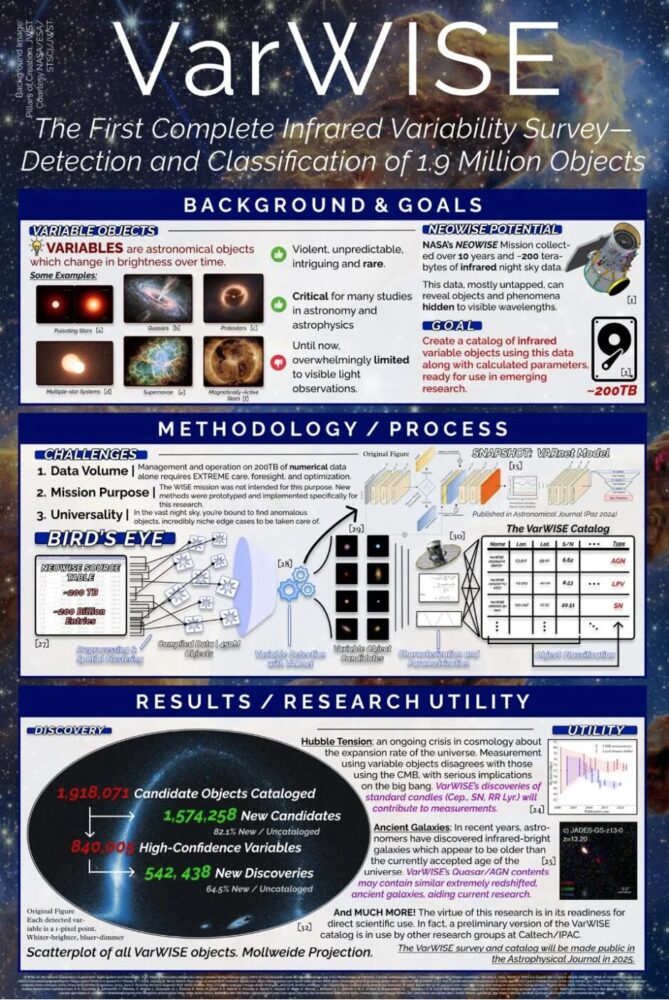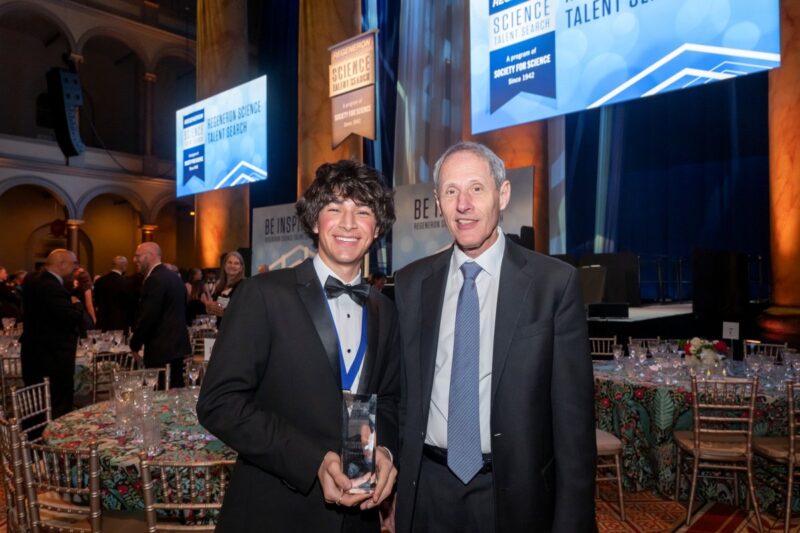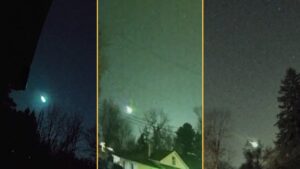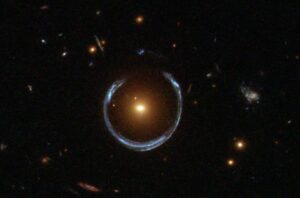High school student Matteo Paz has stunned the scientific community by identifying 1.5 million previously unknown objects in space.
By creating an artificial intelligence algorithm, Paz found a way to sift through vast amounts of space data and uncover millions of cosmic objects hiding in plain sight. His work didn’t just impress scientists; it earned him the top prize at the 2025 Regeneron Science Talent Search — a $250,000 award that goes to the most promising young scientists in the U.S.
It all started during Caltech’s Planet Finder Academy in 2022. The summer outreach program is designed to give high schoolers hands-on experience in astronomy, and Paz was hooked. The following year, he signed up for a six-week Caltech program that pairs students with campus mentors. Paz was assigned to Davy Kirkpatrick.
“The first day I talked to him, I said that I was considering working on a paper to come out of this, which is a much larger goal than six weeks,” said Paz. “He didn’t discourage me. He said, ‘OK, so let’s talk about that.’ He has allowed an unbridled learning experience. I think that’s why I’ve grown so much as a scientist.”

Matteo Paz presents the initial work on his project in 2023. Photo: Kitty Cahalan
How do you make sense of so much information?
With encouragement from Kirkpatrick, Paz tasked himself with a daunting challenge: How do you process and make sense of nearly 200 terabytes of space data gathered by NASA’s NEOWISE (Near-Earth Object Wide-field Infrared Survey Explorer) telescope?
NEOWISE has been scanning the sky for asteroids for over a decade. At the same time, it has captured data on other variable objects. According to Caltech, these are “hard-to-catch phenomena like quasars, exploding stars, and paired stars eclipsing each other.” The NASA telescope was able to detect the varying heat of these objects, but the sheer size of the dataset made it impossible for human astronomers to comb through them.
With almost 200 billion rows of data, going through it by hand was never an option, and Paz never considered it. The 18-year-old had a knack for AI, coding, and computer science. Combining this with his substantial math knowledge (he has been studying advanced undergraduate math for the last few years), he created an AI model to sift through the data for him.

Matteo Paz first place research poster at the 2025 Regeneron Science Talent Search. Image:
Matteo Paz/Society for Science
Machine learning
In the short six-week program, he began using machine learning to make an AI model that could recognize patterns in the infrared data — subtle signals that might indicate the presence of cosmic objects. Kirkpatrick acted as an astronomy consultant and helped him interpret the data.
The duo kept working on the project after the six weeks were up. By 2024, Paz was mentoring other high school students on the subject. Now the model can tear through the raw data from the NEOWISE telescope. They have made a jaw-dropping 1.5 million discoveries, each a potential new clue about the structure and history of our universe.
Since winning the 2025 Regeneron Science Talent Search, Paz hasn’t slowed down. He and Kirkpatrick hope to publish the complete catalog of newly found objects this year. Paz has also secured his first paid job. He is working at Caltech, continuing his research and collaborating with astrophysicists on how to scale his AI system for even bigger projects.






